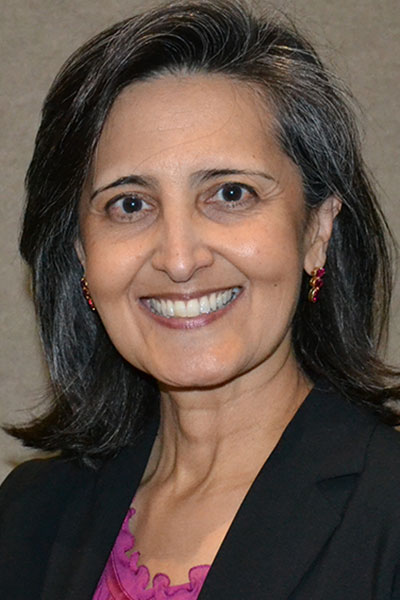
South Asian individuals living in the United States have the highest prevalence of diabetes compared to other racial or ethnic groups at 27% versus 7% for whites and 15% for Hispanics. This elevated prevalence stems from greater insulin resistance and lower beta-cell function in South Asians across all body mass index (BMI) and waist circumference measures. South Asians have more metabolic risk factors even at normal BMI.
“A South Asian BMI of 19.6 has roughly the same metabolic risk factors as a white BMI of 25,” said Alka M. Kanaya, MD, Professor of Medicine, Epidemiology & Biostatistics at the University of California, San Francisco. “South Asians have less lean muscle mass than other racial and ethnic groups and store more fat in all the wrong places—liver, visceral, and intramuscular stores. It is time to reconsider our ADA recommendations for BMI and diabetes screening.”
Dr. Kanaya explored the latest findings and clinical implications from Mediators of Atherosclerosis in South Asians Living in America (MASALA) during the Kelly West Award for Outstanding Achievement in Epidemiology lecture on Saturday, “Diabetes in South Asians: Uncovering Novel Risk Factors with Longitudinal Epidemiologic Data.” The session can be viewed by registered meeting participants at ADA2023.org. If you haven’t registered for the 83rd Scientific Sessions, register today to access the valuable meeting content through August 28.
She is co-principal investigator of MASALA, which launched in 2010 with 906 participants. The cohort now includes 1,164 individuals. The final cohort will include 2,300 individuals and a second Wave B began enrolling immigrants from Bangladesh and Pakistan in 2021.
Dr. Kanaya noted that MASALA is modeled on Multi-Ethnic Study of Atherosclerosis (MESA), which includes white, African-American, Hispanic, and Asian, predominately of Chinese descent, participants to enhance data comparability analyses.
The South Asian population accounts for about a quarter of the global population and represents a worldwide diaspora, she noted. The U.S. Census groups people from South Asia, primarily from India, Pakistan, Bangladesh, and Sri Lanka, with 19 other countries of origin as “Asian Americans.” That aggregation cloaks important nuances.
National Health and Nutrition Examination Survey (NHANES) data from 2011-2016 show Asian Americans having the second lowest prevalence of diabetes at 19.1% versus 12.1% for whites, 20.4% for Blacks, and 22.1% for Hispanics. Deaggregating the data shows as much heterogeneity among Asian American subgroups as in the U.S. population as a whole.
East Asian individuals (of Chinese, Japanese, and Korean descent) have a diabetes prevalence of 14.9%, South Asian individuals (of Indian, Pakistani, and Bangladeshi descent) have a prevalence of 23.3%, and Southeast Asian individuals (of Filipino, Vietnamese, and Indonesian descent) have a prevalence of 22.4%.
Nearly all of the MASALA cohort (98%) are immigrants to the U.S. A majority (83%) are of Indian origin; 6% are from Pakistan; 2% are from Sri Lanka; and less than 1% each are from Bangladesh, Nepal, and Bhutan. About half are female, and the cohort is split between study sites in Chicago and the San Francisco Bay area. The mean age is 57 with a mean of 28 years in the U.S.
A study of MESA and MASALA type 2 diabetes subtypes revealed five clusters: older age at onset (44%), severe hyperglycemia (26%), severe obesity (20%), insulin use (9%), and younger age at onset (1%). Each of the five population subgroups has a different distribution of type 2 diabetes subtypes, Dr. Kanaya noted. South Asian individuals have more severe hyperglycemia, older age of onset, and severe obesity, while the Chinese subgroup has largely older age of onset, with some severe hyperglycemia and little severe obesity.
“Subtype matters for treatment,” she explained. “The severe hyperglycemia subtype has the highest incidence of coronary artery calcium, and clinicians should consider newer sodium-glucose cotransporter-2 (SGLT2) inhibitors or glucagon-like peptide-1 (GLP-1) receptor agonists to lower cardiovascular disease risk. Older age at onset is less aggressive and may need less medication or less tight control. Severe obesity does not have higher chronic kidney disease or atherosclerosis, so aggressive weight loss, metformin, and thiazolidinediones are treatments of choice. You can’t treat all Asian Americans alike.”

